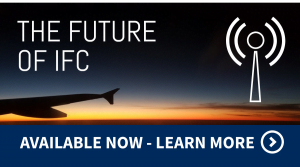Covid-19 has had a remarkable impact on consumer behaviours. In this article, we consider the impact of accelerating digital trends on the IFC Business Model. Can airlines pursue a simple approach to in-flight connectivity?
 Background
Background
A pandemic-fueled 18 months has given rise to an undeniable acceleration in the way people go about their daily lives. Globally, a largely locked down population increasingly looked to the web to watch on-demand content, shop, and socialise. The statistics back this up. Consumers worldwide spent nearly $4.29 trillion online in 2020, up more than 24 percent year-over-year, while retail sales across all channels, globally, grew by just 1 percent in the same time frame, according to Digital Commerce 360. Worldwide subscriptions to online video services increased by 26 percent in 2020 and the average time people spend online each day ticked closer to the 7-hour mark, up from 6 hours and 38 minutes a year earlier, according to a We Are Social analysis of 2021.
Video is King
It remains to be seen whether all of these newfound habits will stick among the general population, but there’s a recognition that the pandemic has only accelerated our consumption of data, which has been on an upward trajectory for many years now. Linked to this point, popular social sites like Facebook, Instagram, and Twitter, have continued to transition from text-based content to more visual, bandwidth-heavy feeds recognizing the preference for video. A pre-pandemic report released by Cisco projected online videos will make up more than 82 percent of all consumer internet traffic in 2022, 15 times higher than it was in 2017. It’s reasonable to assume this figure will now be even higher.
Today, exposure to and/or consumption of video content, whether it be TV on demand, vlogs or user generated content, is a fundamental part of an individual’s online experience. It is this factor driving a simplification of the In-Flight Connectivity (IFC) business model.
 IFC Business Models
IFC Business Models
Paid-for IFC remains a popular model across the 100+ carriers currently serving up internet access within the cabin. The service is typically positioned to passengers in three tiers: messaging-only, general browsing, and streaming. While the lower and upper tiers are easy to relate to as a passenger, the general browsing package is becoming a tough sell for airlines because of the prevalence of video on popular sites.
In most middle-tier IFC packages, this type of content is either heavily restricted or quickly eats up a finite allocation of bandwidth, creating frustration and confusion among the few passengers willing to pay for access. Nobody wins in this scenario as satisfaction scores will fall and projected take rates never materialize. The outcome is that “browsing only” packages are expected to quickly become obsolete, and preference placed on enabling a ground-like streaming experience instead.
So how much longer will we see separate “browsing” and “streaming” tiers presented to passengers? Whether or not an airline takes responsibility for pricing IFC, Valour Consultancy believes that we’ll very soon see airlines transition to a more simplified model, with passengers given the option of messaging only or streaming level access. We can already see this approach coming to fruition among airlines that offer IFC for free, with the vast majority serving up either free messaging or — in the case of Air New Zealand, JetBlue, Qatar, and Qantas — free streaming-capable services. There is no middle ground here.
Next stop = simplification
Backed by an abundance of fresh capacity across various orbits, IFC service providers are expected to drive the simplification process by transitioning away from commercial models inclusive of a mid-tier browsing-only offering and empower airlines with cost-effective streaming-capable services.
When thinking about the factors that have held back IFC adoption and access to date, cost and complexity sit very high on the list. Over time though, we’ve seen both easing incrementally, driven on by consumer demand and a maturing ecosystem. There is now an expectation, among those willing to pay for IFC, to browse or message friends and family without limitations.
In the current climate, airlines must be given the means to meet this expectation by introducing a simplified and attractive messaging or streaming model. Doing so will go some way to driving passenger satisfaction and loyalty, two attributes that will solidify the IFC business case in the longer term; at which point, everyone wins.
This blog by Senior Analyst Daniel Welch was first published by Via Satellite magazine.








